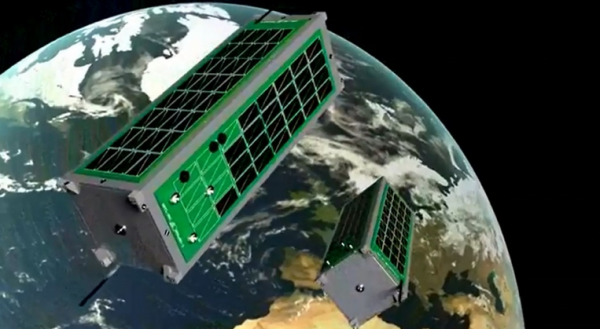Researchers at the University of Surrey are preparing for a new mission. For this, space innovators at the University of Surrey and Surrey Satellite Technology Limited (SSTL) are developing ‘STRaND-2’ (Surrey Training, Research, and Nanosatellite Demonstrator), a nano satellite which is the identical satellite of STRaND-1 and includes Xbox Kinect technology. The mission is to hook up both the satellites together in space.
STRaND-1 has a Google Nexus phone inside it. When this satellite will be in space, it’ll try to use the Nexus as its onboard computer. On the other side, STRaND-2 is going to use Xbox Kinect. Xbox Kinect tech will help to see if two satellites can “see” each other in space and hook up with each other. The identical twin satellites will each measure 30 centimeter (3 unit Cubesat) in length, and utilise components from the XBOX Kinect games controller to scan the local area.
The STRaND-2 twins will be separated after launch. After the initial phase of system checks, the two satellites will be commanded to perform the docking procedure. When they come closer to each other, the Kinect-based docking system will provide the satellites with 3D spatial awareness to align and dock.
Docking systems have never been deployed on such small and low cost scale before, but SSTL wants to try it because, if it works, then they might be interested building small satellites rather than building bigger satellite. To be noted, building other satellites cost thousands of millions of pounds but both STRaND-1 and STRaND-2 cost hundreds of thousands of pounds to build.
Dr Chris Bridges, leader of SSC Project said, “It may seem far-fetched, but our low cost nanosatellites could dock to build large and sophisticated modular structures such as space telescopes. Unlike today’s big space missions, these could be reconfigured as mission objectives change, and upgraded in-orbit with the latest available technologies.”
According to the team “space building blocks” could be used to build larger crafts in space. In addition, the satellites could be used to do anything from providing a backup power source to adding extra propulsion to a craft.
STRaND-2 is now being developed at SSTL labs. STRaND-1 is expected to launch at the end of this year, but on which date, not cleared. For more information, visit University Of Surrey.
Source : University Of Surrey
Thanks To : The Register
[ttjad keyword=”solar-device”]




![Read more about the article [Video] How Astronauts Wash Hair While In Space](https://thetechjournal.com/wp-content/uploads/2013/07/Astronaut-Karen-Nyberg-Washing-Her-Hair-At-ISS-512x365.png)